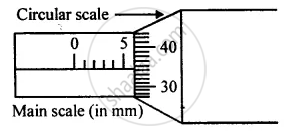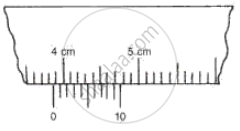Advertisements
Advertisements
प्रश्न
उत्तर
For measuring the length of an object using a vernier caliper, these steps are followed:-
(a). First of all, we find the least count and zero error of the vernier calipers.
(b). Place the object whose length is to be measured below the lower jaws and move the jaw till it touches the object. Record the main reading.
(c). Note the division on the vernier scale that coincides with some division of the main scale. Multiply this number of vernier division with least count. This is vernier scale reading.
(d). Record the observed length by adding the main scale reading and the vernier scale reading. Also, subtract zero error with its proper sign, if any, from the observed length to find the true length of the object.
APPEARS IN
संबंधित प्रश्न
A vernier callipers has a zero error of + 0.06 cm. Draw a neat labelled diagram to represent it.
The pitch of a screw gauge is 1 mm and the circular scale has 100 divisions. In measurement of the diameter of a wire, the main scale reads 2 mm and 45th mark on the circular scale coincides with the base line. Find
(i) The least count and
(ii) The diameter of the wire.
State the formula for determining least count for a vernier callipers.
Figure shows a screw gauge in which circular scale has 200 divisions. Calculate the least count and radius of the wire.

What do you understand by the following term as applied to screw gauge?
Positive zero error
How do you account for positive zero error for calculating the correct diameter of wires?
The following figure shows the reading of a vernier caliper used for measuring the thickness of a metal sheet.
(i) Find the least count of the instrument.
(ii) Calculate the thickness of the metal sheet.

The precision of vernier calipers is ______ mm.
